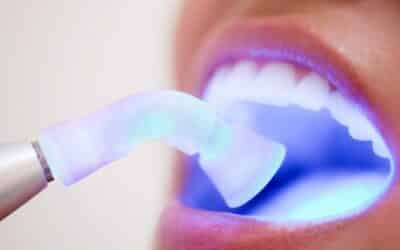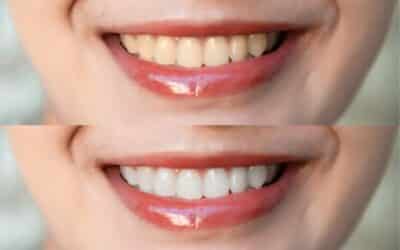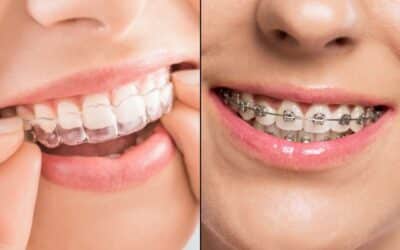Wisdom teeth, also known as third molars, are the last set of teeth to emerge in the back of the mouth. Typically, they erupt between the ages of 17 and 25, though some people may never develop them. For others, wisdom teeth can lead to several dental issues, such as overcrowding, infections, and impaction, making their removal a common procedure.
Understanding the process of wisdom teeth removal can ease anxiety and help you prepare for this common oral surgery. This article will provide a detailed breakdown of the entire procedure, from the initial signs that removal is necessary to the recovery process afterward.
Why Wisdom Teeth Need to Be Removed
Not everyone will need their wisdom teeth removed, but in many cases, dentists recommend extraction to prevent complications. Some of the most common reasons for wisdom teeth removal include:
Impaction: Wisdom teeth can become impacted when there is not enough space in the jaw for them to fully emerge. Impacted teeth may remain partially or completely trapped beneath the gums, leading to pain and possible infection.
Overcrowding: If the wisdom teeth emerge when there is limited space, they can push other teeth out of alignment, causing overcrowding and possibly affecting your bite.
Infections: Partially erupted wisdom teeth can create an environment where bacteria thrive, leading to infections such as pericoronitis (an infection of the tissue surrounding the tooth).
Decay: Because wisdom teeth are located far back in the mouth, they can be harder to clean properly, making them more susceptible to cavities and decay.
Cysts or Tumors: In rare cases, an impacted wisdom tooth can lead to the development of cysts or even benign tumors, which can cause damage to the surrounding bone and tissue.
For these reasons, dentists often recommend removal before the teeth cause any significant problems.
The Consultation and Preparation
The process of wisdom teeth removal begins with a consultation with your dentist or oral surgeon. During this consultation, your dentist will evaluate the position of your wisdom teeth using dental X-rays to determine if they need to be removed. This is also a time to discuss your medical history, medications you are currently taking, and any concerns or questions you may have about the procedure.
Once the need for removal is confirmed, your dentist will explain the procedure and provide you with instructions for preparation. This may include:
Fasting: If you are undergoing general anesthesia, you may need to fast for a certain number of hours before the surgery.
Transportation: Since you may be groggy or unable to drive after the procedure, it is often recommended to arrange for someone to drive you home after the surgery.
Medications: Your dentist may recommend over-the-counter or prescription medications to take before and after the procedure to manage pain and swelling.
The Wisdom Teeth Removal Procedure
Wisdom teeth removal is typically performed by an oral surgeon or a dentist who specializes in extractions. The complexity of the procedure depends on the position of the teeth and whether they are impacted or have fully erupted. Here is a step-by-step breakdown of the procedure:
Step 1: Anesthesia
Before the procedure begins, your dentist or oral surgeon will administer anesthesia to ensure that you are comfortable and pain-free throughout the surgery. There are different types of anesthesia that may be used, depending on your needs and the complexity of the extraction:
Local Anesthesia: This is administered via injection around the area of the wisdom teeth. You will be awake during the procedure but will not feel pain.
Sedation Anesthesia: This type of anesthesia is administered through an intravenous (IV) line. You will be conscious but in a relaxed state and may have little memory of the procedure.
General Anesthesia: If your teeth are severely impacted or if multiple teeth are being removed at once, your dentist may recommend general anesthesia. This will make you completely unconscious throughout the procedure.
Step 2: Incision and Exposure of the Tooth
If your wisdom teeth are impacted, the oral surgeon will make an incision in the gum tissue to expose the tooth and bone. Sometimes, a small amount of bone may need to be removed to access the tooth fully.
Step 3: Sectioning the Tooth
In some cases, it may be necessary to break the tooth into smaller pieces to remove it more easily, especially if the tooth is deeply impacted. This process is known as sectioning.
Step 4: Extraction of the Tooth
Once the tooth is accessible, the dentist will carefully remove it using forceps. If the tooth has been sectioned, the pieces will be removed one by one.
Step 5: Cleaning and Closing the Area
After the tooth is removed, the oral surgeon will clean the extraction site to remove any debris or remaining tooth fragments. Depending on the size of the incision, stitches may be required to close the wound and promote healing. Most modern stitches used in oral surgery are dissolvable, meaning they will naturally break down in the mouth after a few days.
Finally, a gauze pad will be placed over the extraction site to help stop the bleeding and encourage clot formation.
Post-Procedure Recovery
The recovery process after wisdom teeth removal can vary depending on the complexity of the extraction and your body’s ability to heal. Here’s what you can typically expect in the days following the procedure:
First 24 Hours
In the first 24 hours after the extraction, you should focus on resting and keeping the extraction site clean. Your dentist will provide you with detailed aftercare instructions, including how to manage any discomfort or swelling.
Pain and Swelling: It is common to experience some pain, swelling, and bruising in the days following the procedure. Your dentist may prescribe pain medication or recommend over-the-counter pain relievers such as ibuprofen or acetaminophen.
Bleeding: Some bleeding is normal after the procedure, especially in the first few hours. You will be instructed to bite down on a gauze pad to help control the bleeding and encourage clot formation. Avoid spitting, rinsing your mouth forcefully, or using straws, as these actions can dislodge the clot and lead to a painful condition known as dry socket.
Ice Packs: Applying ice packs to the outside of your cheeks can help reduce swelling and numb the area.
Next 2-3 Days
During the next few days, you should continue to rest and avoid strenuous activities. The majority of the pain and swelling should subside within two to three days, though some discomfort may persist for up to a week. It is important to follow your dentist’s recommendations for pain management and diet during this time.
Diet: Stick to soft foods that do not require much chewing, such as yogurt, mashed potatoes, and smoothies. Avoid hot foods, spicy foods, and hard or crunchy items that could irritate the extraction site.
Oral Hygiene: While it is important to keep your mouth clean, avoid brushing directly over the extraction site for the first few days. Instead, rinse your mouth gently with warm salt water to keep the area clean and promote healing.
Weeks 1-2
By the end of the first week, you should notice significant improvement in swelling and discomfort. If you received stitches, they will usually dissolve on their own during this time.
Follow-Up Appointment: Your dentist may schedule a follow-up appointment to monitor your healing and ensure there are no complications, such as infection or dry socket.
Return to Normal Activities: After one to two weeks, you should be able to resume most normal activities, including eating a wider range of foods and engaging in light exercise. However, avoid any strenuous physical activities for at least two weeks to prevent disrupting the healing process.
Possible Complications and How to Avoid Them
Although wisdom teeth removal is a routine procedure, there are some potential complications to be aware of, including:
Dry Socket: This occurs when the blood clot that forms over the extraction site becomes dislodged, exposing the underlying bone and nerves. Dry socket can be very painful and requires prompt treatment by your dentist. To avoid dry socket, avoid smoking, drinking through straws, and spitting during the first few days after surgery.
Infection: Infections can occur if bacteria enter the extraction site. Signs of infection include increased pain, swelling, fever, and pus. If you notice any of these symptoms, contact your dentist immediately.
Nerve Injury: In rare cases, the removal of lower wisdom teeth can lead to nerve injury, causing numbness or tingling in the lips, tongue, or chin. This is typically temporary, but in some cases, it may be permanent.
By closely following your dentist’s post-operative care instructions, you can minimize the risk of complications and ensure a smooth recovery.
Conclusion
Wisdom teeth removal is a common and necessary procedure for many people, especially when these teeth cause overcrowding, impaction, or other dental issues. Understanding the process, from the initial consultation to the recovery period, can help alleviate any concerns and ensure you are well-prepared for the procedure.
If you’re considering wisdom teeth removal and want to ensure a comfortable and professional experience, Dental Implants Orange County offers expert care and guidance throughout the process. With their experienced team of dental professionals, you can trust them to provide a safe and efficient wisdom teeth removal procedure.




